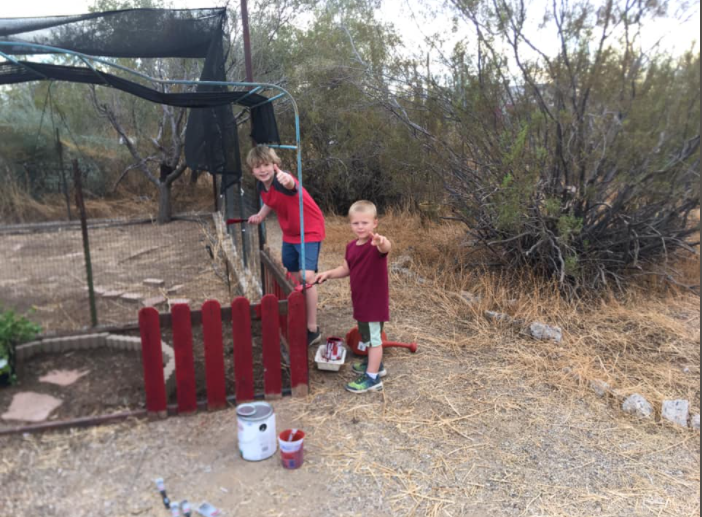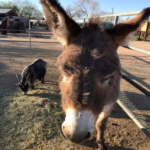
MESA, Arizona – “Miss Laura! A chick! There’s a chick in the shed!”
The excited cry set students at the Dynamic Micro-school scurrying. My height advantage allowed me to see over the students’ heads to spy a noticeably protective mother hen. Moments later, I caught a glimpse of the long-awaited hatchling.
As the students broke out in a cacophony of celebratory conversation, I wondered to myself: What percentage of America’s youth attending school on Zoom or some other virtual platform are having this much fun? I’d put the over/under at 1% — but give me the under.
My next thought was: If this farm/animal rescue shelter/school is a glimpse into what’s possible for education, the future looks … well, fun!
Laura DeRoule, a 15-year veteran of Mesa public school classrooms, had, until recently, left the profession entirely. Endless test prep and teaching from a script left her burned out and unfulfilled.
“It just was a bunch of testing at that time where I felt like we weren’t really using what we found out,” DeRoule told her local newspaper in January.
The chance to run her own school got her back in the education game.
 The Dynamic Micro-school meets at Superstition Farm in East Mesa. It never serves than a dozen students at one time, but that’s in part because families have the flexibility to choose their schedules. Some kids come daily, but others only occasionally. One student I met when I visited earlier this week was enrolled in a district distance learning program. Others were homeschoolers.
The Dynamic Micro-school meets at Superstition Farm in East Mesa. It never serves than a dozen students at one time, but that’s in part because families have the flexibility to choose their schedules. Some kids come daily, but others only occasionally. One student I met when I visited earlier this week was enrolled in a district distance learning program. Others were homeschoolers.
Among them were students who participate in Arizona’s Empowerment Scholarship Account program.
Delightfully, the once hard-and-fast distinctions that define “education” are beginning to blend, and the Dynamic Micro-school is a great example. Distance learning, homeschool and private choice program students are all, well, students. In a multi-age environment where everyone alternates between group efforts and doing their own thing, there’s little to distinguish one educational flavor from another.
 These particular students were busy feeding ducks, chickens, goats, pigs and tortoises when I arrived. Oh, and donkeys. (My personal favorite of all the animals was a donkey named Migs. Migs was very friendly but voiced his opinion loudly and clearly to show he was hungry.)
These particular students were busy feeding ducks, chickens, goats, pigs and tortoises when I arrived. Oh, and donkeys. (My personal favorite of all the animals was a donkey named Migs. Migs was very friendly but voiced his opinion loudly and clearly to show he was hungry.)
There are any number of policy implications to this happy farm school – and more than a hint of the multi-educator world foreseen by Jack Coons and Stephen Sugarman.
Most Baby Boomers who went into teaching after college reached retirement eligibility long ago, and enrollment in colleges of education nationwide began to see sagging enrollment years ago. The need for teachers like Lara DeRoule to return to education will become increasingly acute year by year.
Put her and other innovative teachers like her in charge, or it’s game over, man.


